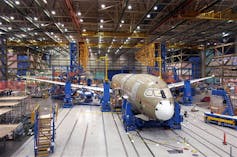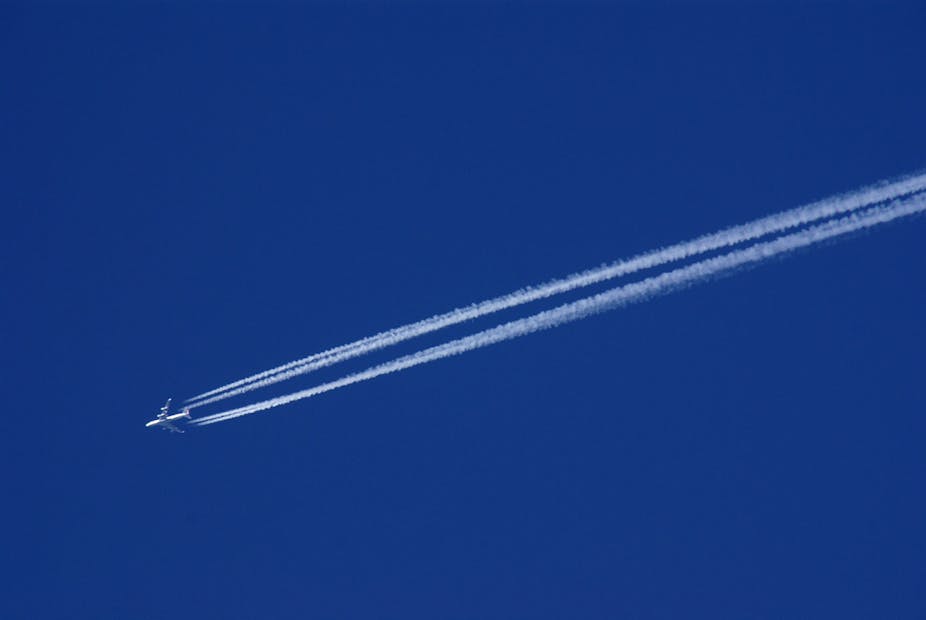A few months ago I was invited to a small gathering organised by executives from a large international airline (one you most certainly have heard of). About a dozen of us were there and the mix was varied: reps from CASA, Airservices Australia, Sydney airport, various banks and so on. The airline wanted to discuss parts of their strategic plan and a lively discussion ensued.
Before the presentation took place, I had a chat with some of the people around the room and I came across this banker who seemed particularly agitated. “This is my first one of these,” I say. “What should I expect?”. He replies with: “Well, you never know with these airlines. I still don’t know how they manage to stay in business after all these years without making any MONEY!”
Truth is, the airline that organised the gathering was doing quite well but most would agree with him - airlines don’t have the best record as profit-making organisations. Just last March, Warren Buffett claimed that the airline industry has “all the ingredients of a bad business”.
However, although the companies that are flying passengers from A to B (i.e. the airlines) don’t always do well financially, the large corporations selling them the planes (i.e. the aircraft manufacturers) are for the most part showing healthy numbers. There is clearly a discrepancy between the aircraft buyers (or leasers) and the aircraft makers - but why? How come these two inter-linked industries seem to fare so differently?
Aircraft orders taking off
The commercial aerospace industry can be broken down into two main components: the companies that make the aircraft - commonly referred as the OEM (Originial Equipment Manufacturer); and the airlines (the customers acquiring the planes). Most people could name at least two OEMs: The Boeing Company and Airbus (which is a subsidiary of EADS). Other OEMs include Bombardier Aerospace, Embraer, Gulf Stream and many others.

Boeing and Airbus have both broken several industry records in the last couple of years in terms of aircraft orders. Last year, Boeing took the largest commercial aviation order in its history for the delivery of 230 planes worth a combined A$22.4 billion to Indonesian carrier Lion Air. Also last year, Southwest Airlines placed an order for 208 single-aisle Boeing aircraft worth $19 billion while Norwegian Air Shuttle purchased 122 Boeing 737 aircraft for around A$11 billion. More recently, Airbus landed a massive order from Lion Air worth A$18 billion for 234 A320 jets. Airbus has even said it may have to ask for increased flexibility from its customers to cope with the incoming orders aiming for 750 plane orders in 2013.
These large OEMs are also strengthening their position by absorbing some of the maintenance work previously done by maintenance repair and overhaul companies (commonly referred to as MROs). These companies are also struggling as the amount of aircraft maintenance work required is decreasing due to new technological advances, (including advanced materials, as previously discussed in The Conversation).
Some of the large OEMs have another advantage: their military portfolio. Defence projects are immensely important to many of the OEMs’ bottom line and some of the resulting project outcomes do eventually trickle down to commercial aviation. However, military budgets are being tightened as shown by flat defence revenues through the first nine months of 2012 at the global level, and global economic challenges in the near future will likely result in additional decreases in revenue.
OEMs are also consolidating their place in the market by strengthening their position through mergers. Over the past 20 years, over 6000 mergers and acquisitions totalling a value of more than A$600 billion took place worldwide. Airlines are experiencing a similar phenomenon by merging or forging alliances as best shown by last month’s ACCC approval for the Qantas-Emirates partnership and Virgin Australia’s move to acquire a majority stake in Tiger Airways.

A battle between legacy airlines and new emerging players
The aviation industry is notoriously difficult with large capital and operating costs, high fuel costs and increasing competition at a global scale. In Australia, it is also particularly exposed to the rising dollar.
The memories of the Ansett’s agony to bankruptcy are still in most people’s mind although one does not need to look that far back, as shown by last year’s Air Australia collapse.
Looking at the latest half-yearly results, Qantas showed a statutory profit of A$111 million for the six months ending in December 2012 but it suffered a 34% fall in earnings from domestic business travel with Virgin Australia increasingly competing in the corporate travel sector. Virgin Australia is also hurting with a net profit that decreased by half to A$23 million according to the latest half-yearly numbers.
On the international front, Qantas International reported a loss of A$91 million, although it will be interesting to see how the Qantas-Emirates partnership will impact Qantas International earnings in the years to come. But with both airlines ramping up capacity on domestic travel - in attempt to eat into the competition’s market share - the supply is exceeding demand and flying empty seats may result in future losses.
Airlines operating in Australia are hardly the only ones facing challenges. The collapses of long-established carriers such as Spain’s Spanair and American Airlines underscore the grim financial reality the industry faces. In the past nine years, airlines as a whole suffered an aggregate loss of US$47.9 billion.
However, Berkeley economist and commercial aviation expert Severin Borenstein believes that high taxes and fuel costs play a minor role in airline operations. The major drivers are related to fluctuations in demand, government policy and the large cost differential between legacy airlines and new low-cost carriers.
These low-cost airlines are strengthening their position in the market as shown by Ryanair’s recent order for 175 new Boeing planes. Legacy airlines have responded accordingly and the difference in price and service between legacy airlines and low cost carriers is becoming increasingly narrow.
Demand to use airways has been steadily increasing since the 1970s an the rapid growth in Asia will translate into demand for thousands of new aircraft over the next decades as forecasts by both Airbus and Boeing show.
While airlines in “legacy markets” are struggling to beat an increasing competition, the OEMs are indeed adapting to new market movements by servicing customers from emerging markets.

